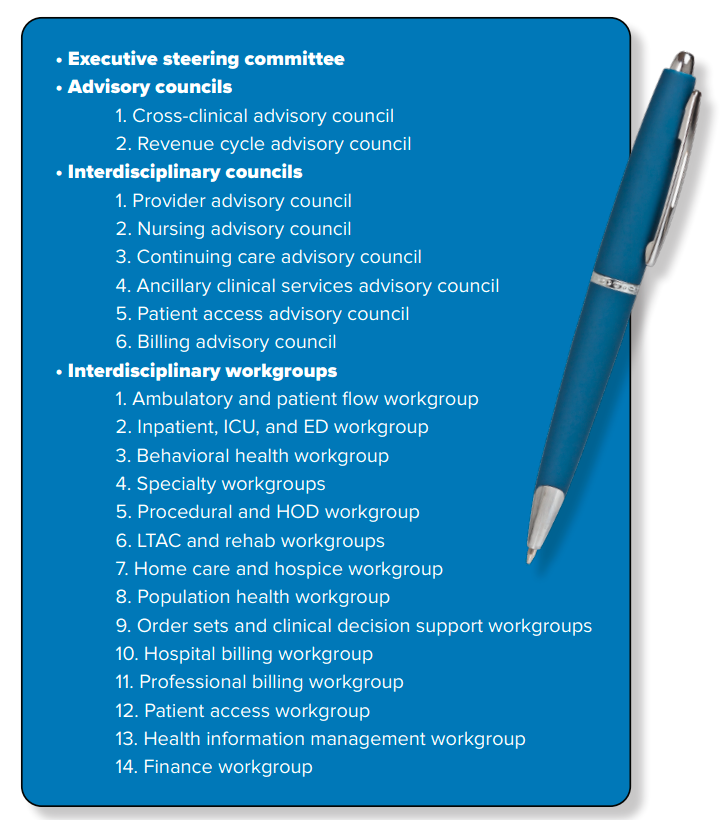An Expert-Assembled Sample Governance Model for Your EHR Implementation

An effective EHR implementation is the number one way to achieve long-term EHR success. While there are many critical implementation factors, setting up proper EHR governance is near the top of the list. A sound governance model comes together from the top down, resulting in consensus-building and adoption, prioritization, transparency, accountability, and communication throughout the project.
Appropriate governance, which includes detailed roles and responsibilities, along with clear and concise communication, will provide your EHR project with the following:
- Consensus-building and adoption: End users who will have the most contact with the system are the ones making the majority of the decisions about it. Involvement from these users fosters buy-in throughout the health system.
- Prioritization: Issues that will have the greatest impact on the health system will be addressed first. The governance process will have established criteria to funnel the right types of issues that require operational input to the governance committees.
- Transparency: All stakeholders in the project will know the current status, what decisions have been made, and why the governance teams settled on those choices. This requires pairing a strong governance process with a good communication plan.
- Accountability: Everyone involved in the governance process understands their role, responsibilities, and required deadlines. Decisions are not revisited without ample reason to do so to ensure that the project moves forward at a steady pace.
- Communication: End each governance meeting with agreed upon talking points. Identify who is affected by each decision made and ensure they are communicated to regarding both the decision made and why. Ideally, peers communicate to peers.
Sample Governance Model
A sound governance model comes together from the top down, with an executive steering committee sitting above councils and councils overseeing work groups. Individuals on each layer will choose those for the layer beneath them and help to take work off participants’ agendas to afford them time to serve. Your governance model may look something like this:
This model helps ensure that EHR implementation is the priority throughout the organization and provides the right constituents and expertise for the relevant decisions that need to be made. Keeping individuals involved across all levels will foster greater commitment to and interest in the final integration and usage of the EHR system, as most will come into contact with the EHR feeling informed and involved. When this level of engagement is achieved, you stand an excellent chance of launching a successful EHR, with a high degree of user satisfaction, at your healthcare organization.
Contact us today for a free 1:1 consultation with one of our EHR implementation experts. We’ll discuss your unique organizational needs and offer proven best practices and solutions.
Talk to a Medix Technology Expert
Work with a trusted partner to advise and staff your organization for successful digital transformation.

